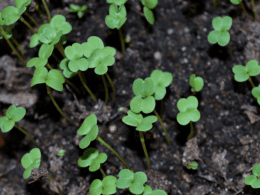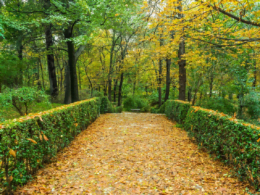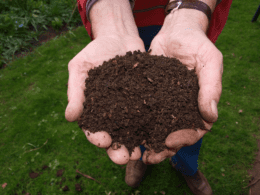If you’re looking for a simple way to reduce your household waste and improve the health of your plants, composting cardboard is a great option. Not only is it an effective way to dispose of cardboard, but it also provides valuable nutrients for your garden. Plus, it’s an eco-friendly choice that can help you reduce your carbon footprint and contribute to a greener planet.
Composting cardboard is easy and convenient, and it’s a great way to take a small step towards a more sustainable lifestyle. Whether you have plain brown cardboard or colorful cereal boxes, all types of cardboard can be composted.
In this article, we’ll provide a guide to composting cardboard, including the types of cardboard you can compost, the steps for composting, and the benefits of recycling cardboard. So, if you’re ready to start composting cardboard for greener living, read on!
Quick Takeaways
- Composting cardboard can reduce household waste going to landfills and improve plants.
- Plain brown cardboard, cardboard with ink, cardboard egg cartons, cereal boxes, and rolls from toilet paper or paper towels can be composted.
- Turning the pile every three to five days and keeping the cardboard from matting up can speed up the composting process.
- Recycling cardboard by turning it into compost is helpful to the environment and reduces strain on local waste-collection services.
Why Compost Cardboard?
If you want to reduce household waste going to landfills and improve your plants, composting cardboard is a great option. Not only does it divert cardboard waste from landfills, but it also provides a valuable soil amendment for your garden.
By composting cardboard, you can create a nutrient-rich soil that will help your plants grow stronger and healthier. The environmental impact of cardboard waste cannot be ignored. Paper and cardboard packaging make up a significant portion of landfill waste, and this waste can take years to break down.
By composting cardboard, you can reduce the amount of waste going to landfills and help to create a greener, more sustainable future. So, start composting your cardboard today and make a positive impact on the environment!
How Can Grass Clippings Help Speed Up the Composting Process?
Fast-track composting with grass clippings is an effective way to accelerate the composting process. By adding grass clippings to your compost pile, you introduce a high nitrogen source that aids in breaking down organic material quickly. The clippings provide essential nutrients, moisture, and insulation, ultimately speeding up decomposition and producing nutrient-rich compost in a shorter timeframe.
Types of Cardboard to Compost
You can add plain brown cardboard, cereal boxes, and rolls from toilet paper or paper towels to your compost pile. These types of cardboard are perfect for composting because they aren’t coated with any substances that can harm your plants. If you have large pieces of cardboard, it’s essential to shred them into smaller pieces to speed up the composting process. Shredding techniques can help break down the cardboard faster and allow for better airflow within the pile.
If you’re looking for inked cardboard alternatives to compost, you can add shiny colored cardboard from product packaging or white or bleached cardboard. However, some people may choose not to add these types of cardboard to their compost because of the fear of contaminating the finished material with chemicals or dyes that could harm plants. But, it would take a significant amount of inked or altered cardboard in the compost to cause concern about contamination. So, if you have these types of cardboard lying around, don’t hesitate to add them to your compost pile!
Steps for Composting Cardboard
To start composting cardboard, first remove any uncompostable items from the material, tear, cut, or shred it into smaller pieces, and mix it into your compost pile.
Here are three tips to keep in mind as you compost cardboard:
-
Shredding techniques: Shredding the cardboard into smaller pieces can help speed up the composting process by increasing the surface area for microorganisms to break down. You can use a paper shredder or scissors to cut the cardboard into small pieces, or simply tear it up by hand.
-
Troubleshooting tips: If you find that your compost pile is not breaking down as quickly as you’d like, try adding more nitrogen-rich ‘green’ materials like food scraps or grass clippings. You can also turn the pile more frequently to increase airflow and mix the materials together. If the pile is too wet and smells bad, try adding more ‘brown’ materials like shredded cardboard to absorb some of the moisture.
Remember, composting cardboard is an easy and eco-friendly way to reduce household waste and improve the health of your plants. With a few simple techniques and troubleshooting tips, you can create a successful compost pile that will benefit both your garden and the environment.
– Can Composting Meat be Harmful to the Environment Compared to Cardboard?
The pros and cons of composting meat versus cardboard depend on various factors. While composting meat can release methane and attract pests, cardboard can introduce chemicals and toxins. Both have potential environmental impacts, so proper management and balance are crucial for effective and eco-friendly composting practices.
Benefits of Recycling Cardboard
Recycling your cardboard can have a positive impact on the environment by reducing landfill waste and easing the strain on waste-collection services. In fact, recycling just one ton of cardboard can save up to 17 trees and reduce greenhouse gas emissions by up to 60%. Additionally, reusing cardboard can also save energy and resources that would otherwise be used in the production of new cardboard.
To further emphasize the benefits of recycling cardboard, here is a table outlining the environmental impact of cardboard production and disposal:
| Environmental Impact | Production | Disposal |
|---|---|---|
| Resource Consumption | High | Low |
| Greenhouse Gas Emissions | High | Low |
| Landfill Waste | Low | High |
By recycling or reusing cardboard, we can significantly reduce its negative environmental impact and contribute to a greener future. So, instead of throwing away your cardboard, consider ways to reuse it or properly recycle it.
Frequently Asked Questions
Can all types of cardboard be composted?
Yes, different types of cardboard can be composted, including plain brown, with ink, egg cartons, and cereal boxes. However, avoid shiny or bleached cardboard. Also, greasy pizza boxes may not be suitable.
Is it necessary to shred cardboard before composting it?
Shredding cardboard before composting is not necessary but has benefits. It speeds up the process and reduces the amount of moisture and airflow within the pile. Alternative uses for shredded cardboard include mulch and animal bedding.
How often should the compost pile be turned when composting cardboard?
To ensure the best results when composting cardboard, turn the pile every three to five days. This helps to mix the materials and improve airflow, speeding up decomposition. The benefits of composting cardboard include reducing waste and improving plant growth.
Can cardboard with heavy ink printing or a shiny surface contaminate the finished compost material with chemicals or dyes?
When cardboard with heavy ink printing or a shiny surface is composted, there may be concerns about ink contamination. However, it would take a significant amount to harm plants. It’s a matter of personal preference whether to use them in cardboard composting.
Are there any special considerations to keep in mind when composting cardboard during colder months?
When composting cardboard in colder months, follow these tips: layer cardboard on top of the pile to retain heat, turn the pile frequently to prevent matting, and consider cardboard mulching for added insulation. Benefits include reducing waste and improving soil quality.









